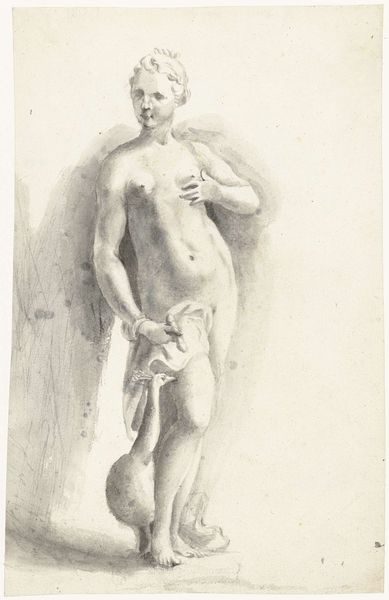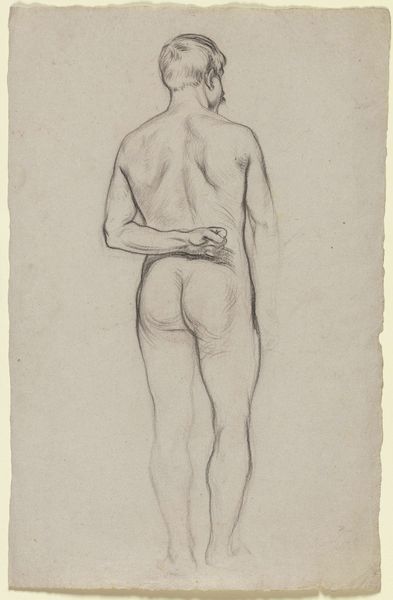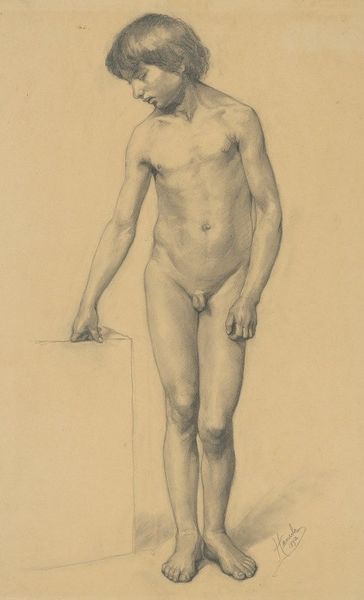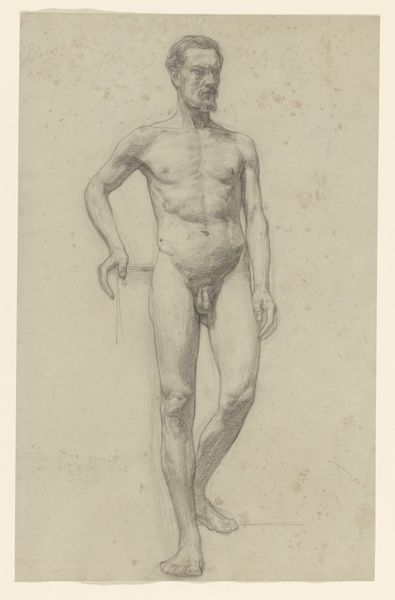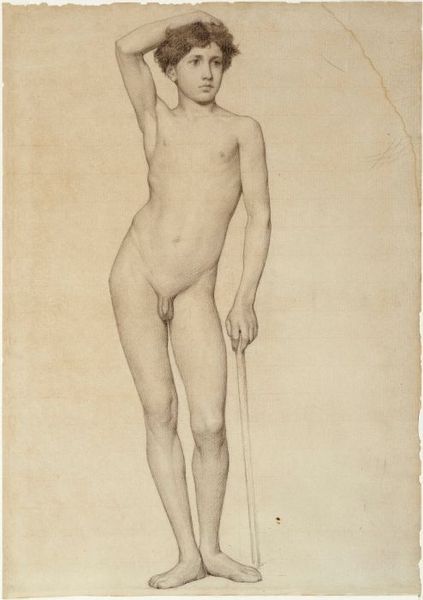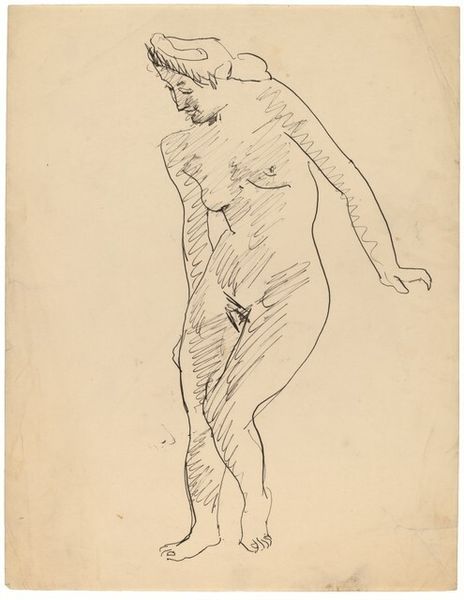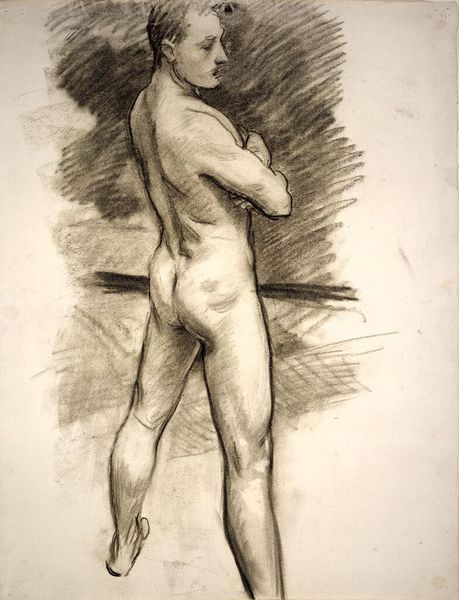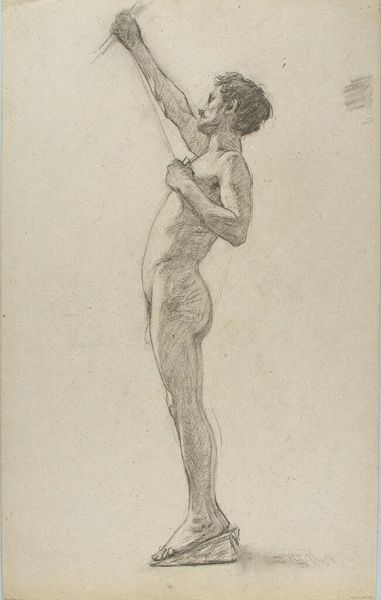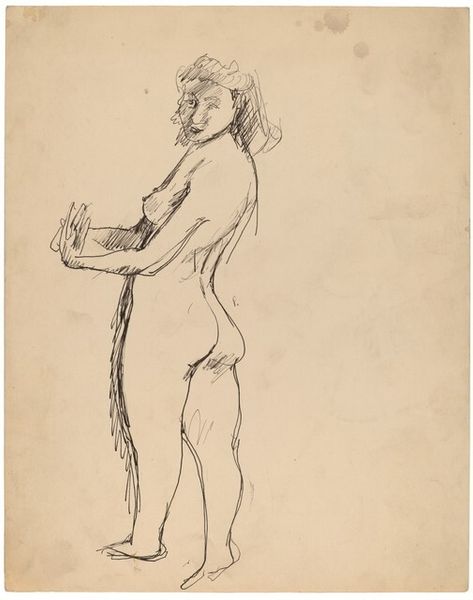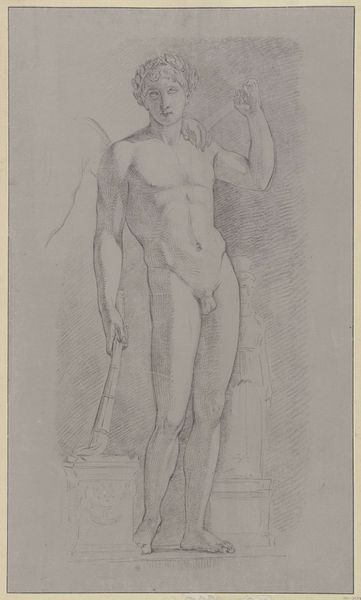
drawing, paper, ink
#
portrait
#
drawing
#
imaginative character sketch
#
light pencil work
#
baroque
#
dutch-golden-age
#
pencil sketch
#
figuration
#
paper
#
personal sketchbook
#
ink
#
idea generation sketch
#
character sketch
#
sketchbook drawing
#
portrait drawing
#
pencil work
#
nude
#
fantasy sketch
Dimensions: height 297 mm, width 182 mm
Copyright: Rijks Museum: Open Domain
Editor: So, this is Gerard ter Borch the Elder's "Standing Adam," created in 1617 using ink on paper, housed here at the Rijksmuseum. It's quite striking, the way the figure is rendered so realistically, yet feels…unfinished, like a preparatory sketch. What strikes you about this piece? Curator: Well, let's consider the context: early 17th century. The availability of paper, the specific ink ter Borch uses, and the methods for preparing both, all dictated the artist's approach. This isn’t just a spontaneous outpouring; it's the result of deliberate choices constrained by available resources. Notice how the shading is built up, layer upon layer, almost like an exercise in understanding tonal values given limited material means. Editor: So, it's less about idealized beauty, and more about the pragmatic considerations of artistic production? The labor involved in creating this image seems central. Curator: Exactly! The “Adam” is secondary. The *making* of the “Adam”, and all its embedded labor and skill is primary. The artist makes visible the constructedness of images – the material circumstances that shape representation. This challenges the prevailing notion that art springs from pure, unadulterated inspiration. Is the use of paper important here? How has the cultural significance of “Adam” been transformed by its medium? Editor: It's like the artist is highlighting the craft of representation itself. And by using Adam, it brings in questions about our ideas of origins…both human and artistic. This has completely changed how I see sketches! Curator: Precisely. Consider how this materiality would have affected its consumption at the time – would it be a valuable piece on its own, or merely preparatory? And what does that mean for us today? Editor: I now appreciate how profoundly the artist's choices in materials and process shaped the meaning and reception of the artwork. Curator: Agreed. This work helps us challenge our own assumptions about art's inherent value.
Comments
No comments
Be the first to comment and join the conversation on the ultimate creative platform.
